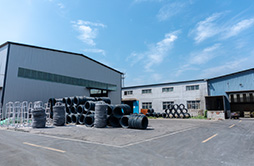Reliable Anchor Bolts for Toilet Installation from Trusted Manufacturers and Suppliers in the Market
Jul . 29, 2024 03:08 Back to list
Reliable Anchor Bolts for Toilet Installation from Trusted Manufacturers and Suppliers in the Market
Understanding Anchor Bolts for Toilet Installation A Guide for Companies
When it comes to restroom construction and maintenance, one crucial component that often goes unnoticed is the anchor bolt—specifically, the anchor bolts used for toilet installations. These small but mighty fixtures play a significant role in ensuring that toilets are securely fastened to the floor, preventing leaks, shifting, and other potential issues that could arise from improper installation. For companies involved in bathroom construction, maintenance, or any related field, understanding the importance and functionality of anchor bolts for toilets is essential.
What Are Anchor Bolts?
Anchor bolts are heavy-duty fasteners used to secure equipment or fixtures to concrete or masonry. In the context of toilet installation, these bolts are typically embedded in the floor and allow the toilet to be securely attached to the plumbing system and the flooring material. The use of anchor bolts is particularly critical in commercial applications, where high foot traffic and usage can exacerbate wear and tear on restroom fixtures.
Importance of Anchor Bolts in Toilet Installation
1. Stability The primary function of anchor bolts is to provide stability. A well-installed toilet should not rock or sway when in use, which could cause stress on the wax seal that connects the toilet to the drainage pipe. If this seal is compromised, it can lead to leaks, odors, and expensive repairs.
2. Safety Toilets are designed to bear significant weight, particularly in public restrooms. Anchor bolts help ensure that toilets remain anchored firmly to the floor, reducing the risk of tipping or shifting during use. This is especially important in high-traffic areas where users may inadvertently push against the toilet.
3. Longevity of Installation Proper use of anchor bolts can extend the life of a toilet installation. By keeping the toilet in place, companies can reduce the likelihood of movement that could damage plumbing connections or wear down seals, resulting in lower maintenance costs.
Types of Anchor Bolts Used for Toilets
There are various types of anchor bolts used for toilet installations, each serving specific needs
anchor bolts for toilet companies

- Expansion Bolts These bolts expand within a drilled hole in the floor, creating a tight fit. They are often used in concrete installations and can be adjusted for a secure hold.
- Lag Bolts These are heavy-duty screws that require pre-drilling into the floor. They provide robust holding strength and are suitable for securing toilets to wood or composite flooring.
- Sleeve Anchors These are commonly used in masonry applications, where the sleeve expands against the sides of the hole drilled into the block or brick, making it an ideal choice for many commercial settings.
Best Practices for Installation
To ensure that toilets are securely anchored, companies should follow best practices when using anchor bolts
1. Correct Sizing Using the right size and type of anchor bolt is crucial. Always refer to the manufacturer's specifications for the toilet model being installed.
2. Proper Installation Technique Follow manufacturer guidelines for installation depth and spacing, and ensure that the bolts are tightened to the appropriate torque specifications.
3. Regular Inspections Regular checks should be carried out to ensure that toilets remain securely fastened. This is particularly important in high-usage environments.
Conclusion
Anchor bolts may be small components, but they play an essential role in the overall integrity of toilet installations. For companies involved in building and maintaining restrooms, understanding the importance of these fixtures can lead to safer, more reliable, and longer-lasting installations. By investing time and resources into choosing the proper anchor bolts and following best practices for installation, companies can not only ensure the functionality of their restroom facilities but also enhance customer satisfaction through reliable and secure fixtures.
Latest news
-
Premium Phosphated Drywall Screws Supplier | Durable, Rust-Resistant
NewsAug.27,2025
-
Reliable Wire Bolts Suppliers | Quality Zinc Plated Fasteners
NewsAug.26,2025
-
Wire Bolts Suppliers: Durable & Reliable Fasteners for Every Project
NewsAug.25,2025
-
Premium Cabinet Bolts Supplier | Wholesale & Custom Solutions
NewsAug.24,2025
-
Reliable Axle Nuts Supplier | Quality & Precision Fasteners
NewsAug.23,2025
-
Durable Bolts for Lawn Mower Handle - Top Supplier & Manufacturer
NewsAug.22,2025
